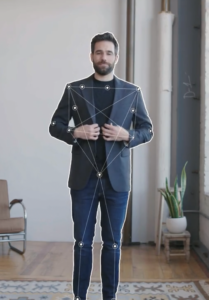With the expanded success of ecommerce in the last twelve months, brands have more opportunities than ever to engage in digital channels with their consumers and stand out from the competition. Consumers are looking for online buying processes that are easy and can provide opportunities to search, learn, and purchase products without any roadblocks, especially during COVID-19. We’ve typically seen that this lends itself to focus on areas such as ratings, reviews, and online price shopping, but trends are now showing there are other effective methods for online, as shoppers want to engage with products both at an experiential level and to ensure the best fit for their needs.
To provide these elevated customer experiences, businesses should consider the opportunity to implement Augmented Reality (AR) into the commerce experience. Augmented reality is an interactive experience of a real-world environment where the objects are enhanced by computer-generated perceptual information, sometimes across multiple sensory modalities, including visual, auditory, haptic, somatosensory, and olfactory.
So, is now the time for AR? Forrester noted that 53% of the US retail industry planned investment in AR in 2020 because they know it assists consumers in making purchase decisions. In 2019, Gartner projected that over 100 million customers would be shopping with AR in 2020. Gartner also reports that 30% of Gen Z and Millennial shoppers wish that online shipping experiences would incorporate AR/VR features, though less than one-fifth of analyzed brands have integrated them. It seems that businesses and customers truly are at a new inflection point with this technology and opportunities are available for brands. Here are some reasons why AR is so important to consider and adopt as part of your ecommerce strategy.
Giving the Consumer Control
From a customer experience (CX) point of view, AR allows consumers to utilize features within a desktop and mobile device that enable them to both interact with the product and determine its suitability to their unique needs and have a virtual product experience opportunity.
For example, I was recently shopping for footstools for my porch but had difficulty deciding which to buy based on how they would look with my previously purchased chair. After visiting Amazon, I found a product featuring an AR experience, “Try before I Buy”, to show what the stool would look like and how it would complement my porch chair. With this knowledge, I found that my product purchase was less about price and more about the certainty of product fit for my needs and reduced the chance that I would return the product if it were unsatisfactory to me.
Similarly, IKEA launched the IKEA Place app to give shoppers the ability to place 3D furniture at scale into rooms, similar to Bang & Olufsen’s app where consumers can place different products and objects on floors, tables, and walls. When companies provide these readily available AR features, they offer consumers control by making the situation as realistic as possible and fully catered to their personal environment.

(My Amazon AR Experience)
Convenience + Customer Relationship
AR can help make the customer buying journey more convenient based on the ease of use and the functionality, as well as create and foster a long-term and more valuable customer relationship. Take MTailor, a company that created a mobile app experience to be your digital tailor. The MTailor app records a 15-second video of your body frame, and the company uses the video and machine learning (ML) to give a 3D rendering to help create custom clothing for blazers, shirts, jeans, shorts, and even face masks. When I used this app to shop for jeans, I could choose from thread colors, the cut, and even add a monogram to the design. Later on, I received a fully customized and perfect fit pair of jeans.

Perficient worked with a global athletic apparel client to utilize AR and improve the mobile commerce experience. The client estimates that routinely, 60% of customers are wearing the wrong size shoe. To combat this, we helped improve the customer experience with AR by creating a solution where customers can simply add a scanned image of their feet to their profile. This hyper-accurate scan maps your foot morphology and is available for use for both online and in-store purchases.
AR shortcuts customer roadblocks while online shopping to solve new problems, and more importantly, create exciting and innovative customer experiences and convenience. So, is this the year of AR breakthrough? It just might be, as GlobeNewswire recently announced that NexTech AR Solutions saw a record-breaking 315% increase in Black Friday sales year-over-year across its AR ecommerce platform this past holiday with their clients, demonstrating some significant momentum with these tools.
Consider Augmented Reality For Your Brand
With the upward incline the digital commerce world is on, businesses must go above and beyond to assist customers and stay ahead of the competition, and AR is a valuable tool to achieve that and to power new experiences for your brand. To learn more about AR technology and these commerce trends for your business, contact our commerce experts today


Thanks ,This information is very helpful for everyone